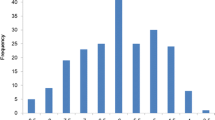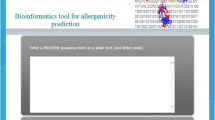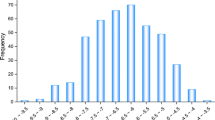Abstract
In order to develop a computational method to rapidly evaluate transdermal peptides, we report approaches for predicting the transdermal activity of peptides on the basis of peptide sequence information using Artificial Neural Network (ANN), Partial Least Squares (PLS) and Support Vector Machine (SVM). We identified 269 transdermal peptides by the phage display technique and use them as the positive controls to develop and test machine learning models. Combinations of three descriptors with neural network architectures, the number of latent variables and the kernel functions are tried in training to make appropriate predictions. The capacity of models is evaluated by means of statistical indicators including sensitivity, specificity, and the area under the receiver operating characteristic curve (ROC score). In the ROC score-based comparison, three methods proved capable of providing a reasonable prediction of transdermal peptide. The best result is obtained by SVM model with a radial basis function and VHSE descriptors. The results indicate that it is possible to discriminate between transdermal peptides and random sequences using our models. We anticipate that our models will be applicable to prediction of transdermal peptide for large peptide database for facilitating efficient transdermal drug delivery through intact skin.




Similar content being viewed by others
References
Prausnitz MR, Mitragotri S, Langer R (2004) Current status and future potential of transdermal drug delivery. Nat Rev Drug Discov 3:115–124
Thomas BJ, Finnin BC (2004) The transdermal revolution. Drug Discov Today 9:697–703
Chen Y, Shen Y, Guo X, Zhang C, Yang W, Ma M, Liu S, Zhang M, Wen LP (2006) Transdermal protein delivery by a coadministered peptide identified via phage display. Nat Biotechnol 24:455–460
Benson HA (2005) Transdermal drug delivery: penetration enhancement techniques. Curr Drug Deliv 2:23–33
Madison KC (2003) Barrier function of the skin: “la raison d’etre” of the epidermis. J Invest Dermatol 121:231–241
Lopes LB, Brophy CM, Furnish E, Flynn CR, Sparks O, Komalavilas P, Joshi L, Panitch A, Bentley MV (2005) Comparative study of the skin penetration of protein transduction domains and a conjugated peptide. Pharm Res 22:750–757
Goodman M, Barry BW (1989) Lipid-protein-partitioning (LPP) theory of skin enhancer activity: finite dose technique. Int J Pharm 57:29–40
Rigg PC, Barry BW (1990) Shed snake skin and hairless mouse skin as model membranes for human skin during permeation studies. J Invest Dermatol 94:235–240
Takahashi K, Sakano H, Numata N, Kuroda S, Mizuno N (2002) Effect of fatty acid diesters on permeation of anti-inflammatory drugs through rat skin. Drug Dev Ind Pharm 2:1285–1294
Barry BW (2004) Breaching the skin’s barrier to drugs. Nat Biotechnol 22:165–167
Karande P, Jain A, Mitragotri S (2004) Discovery of transdermal penetration enhancers by high-throughput screening. Nat Biotechnol 22:192–197
Prausnitz MR, Bose VG, Langer R, Weaver JC (1993) Electroporation of mammalian skin: a mechanism to enhance transdermal drug delivery. Proc Natl Acad Sci USA 90:10504–10508
Pillai O, Nair V, Panchagnula R (2004) Transdermal iontophoresis of insulin: IV. Influence of chemical enhancers. Int J Pharm 269:109–120
Kalia YN, Naik A, Garrison J, Guy RH (2004) Iontophoretic drug delivery. Adv Drug Deliv Re 56:619–658
Lavon I, Kost J (2004) Ultrasound and transdermal drug delivery. Drug Discov Today 9:670–676
McAllister DV, Allen MG, Prausnitz MR (2000) Microfabricated microneedles for gene and drug delivery. Annu Rev Biomed Eng 2:289–313
Prausnitz MR (2004) Microneedles for transdermal drug delivery. Adv Drug Deliv Re 56:581–587
Rajotte D, Ruoslahti E (1999) Membrane dipeptidase is the receptor for a lung-targeting peptide identified by in vivo phage display. J Biol Chem 274:11593–11598
Pasqualini R, Koivunen E, Kain R, Lahdenranta J, Sakamoto M, Stryhn A, Ashmun RA, Shapiro LH, Arap W, Ruoslahti E (2000) Aminopeptidase N is a receptor for tumor-homing peptides and a target for inhibiting angiogenesis. Cancer Res 60:722–727
Trepel M, Arap W, Pasqualini R (2002) In vivo phage display and vascular heterogeneity: implications for targeted medicine. Curr Opin Chem Biol 6:399–404
Duerr DM, White SJ, Schluesener HJ (2004) Identification of peptide sequences that induce the transport of phage across the gastrointestinal mucosal barrier. J Virol Methods 116:177–180
Kang SK, Woo JH, Kim MK, Woo SS, Choi JH, Lee HG, Lee NK, Choi YJ (2008) Identification of a peptide sequence that improves transport of macromolecules across the intestinal mucosal barrier targeting goblet cells. J Biotechnol 135:210–216
McCaldon P, Argos P (1988) Proteins 4:99–122
Mei H, Lian ZH, Zhou Y, Li SZ (2005) A new set of amino acid descriptors and its application in peptide QSARs. Biopolymer (Peptide Science) 80:775–786
Hellberg S, Sjöström M, Skagerberg B, Wold S (1987) Peptide quantitative structure-activity relationships, a multivariate approach. J Med Chem 30:1126–1135
Sandberg M, Eriksson L, Jonsson J, Sjöströ M, Wold S (1998) New chemical descriptors relevant for the design of biologically active peptides. A multivariate characterization of 87 amino acids. J Med Chem 41:2481–2491
The R Project for Statistical Computing (2009) http://www.r-project.org/. Version R 2.10.1
Jung E, Kim J, Choi SH, Kim M, Rhee H, Shin JM, Choi K, Kang SK, Lee NK, Choi YJ, Jung DH (2010) Artificial neural network study on organ-targeting peptides. J Comput Aided Mol Des 24:49–56
Venables WN, Ripley BD (2002) Modern applied statistics with S, Fourth Edition edn. Springer, Berlin
Pipeline Pilot 7.5. http://accelrys.com/products/pipeline-pilot/
Hanley JA, McNeil BJ (1982) The meaning and use of the area under a receiver operating characteristic (ROC) curve. Radiology 143:29–36
Springer C, Adalsteinsson H, Young MM, Kegelmeyer PW, Roe DC (2005) PostDock: a structural, empirical approach to scoring protein ligand complexes. J Med Chem 48:6821–6831
Jung E, Kim J, Kim M, Jung DH, Rhee H, Shin JM, Choi K, Kang SK, Kim MK, Yun CH, Choi YJ, Choi SH (2007) Artificial neural network models for prediction of intestinal permeability of oligopeptides. BMC Bioinformatics 8:245
Natt NK, Kaur H, Raghava GP (2004) Prediction of transmembrane regions of beta-barrel proteins using ANN- and SVM-based methods. Proteins: Str, Funct, Bioinf 56:11–18
Bhasin M, Raghava GP (2004) Prediction of CTL epitopes using QM, SVM and ANN techniques. Vaccine 22:3195–3204
Wang D, Larder B, Revell A, Montaner J, Harrigan R, De Wolf F, Lange J, Wegner S, Ruiz L, Pérez-Elías MJ, Emery S, Gatell J, D’Arminio Monforte A, Torti C, Zazzi M, Lane C (2009) A comparison of three computational modelling methods for the prediction of virological response to combination HIV therapy. Artif Intell Med 47:63–74
Bhasin M, Raghava GP (2004) SVM-based method for predicting HLADRB1*0401 binding peptides in an antigen sequence. Bioinformation 20:421–423
Burden FR, Winkler DA (2005) Predictive Bayesian neural network models of MHC class II peptide binding. J Mol Graph Model 23:481–489
Ivanciuc O, Braun W (2007) Robust quantitative modeling of peptide binding affinities for MHC molecules using physical-chemical descriptors. Protein Pept Lett 14:903–916
Zhang GL, Bozic I, Kwoh CK, August JT, Brusic V (2007) Prediction of supertype-specific HLA class I binding peptides using support vector machines. J Immunol Methods 320:143–154
Fjell CD, Jenssen H, Hilpert K, Cheung WA, Panté N, Hancock RE, Cherkasov A (2009) Identification of novel antibacterial peptides by chemoinformatics and machine learning. J Med Chem 52:2006–2015
Essler M, Ruoslahti E (2002) Molecular specialization of breast vasculature: a breast-homing phage-displayed peptide binds to aminopeptidase P in breast vasculature. Proc Natl Acad Sci USA 99:2252–2257
Kolonin MG, Saha PK, Chan L, Pasqualini R, Arap W (2004) Reversal of obesity by targeted ablation of adipose tissue. Nat Med 10:625–632
Lee NK, Kim M, Choi JH, Kim EB, Lee HG, Kang SK, Choi YJ (2010) Identification of a peptide sequence targeting mammary vasculature via RPLP0 during lactation. Peptides 31:2247–2254
Wan XM, Chen YP, Xu WR, Yang WJ, Wen LP (2009) Identification of nose-to-brain homing peptide through phage display. Peptides 30:343–350
Loan Honeywell-Nguyen P, Bouwstra JA (2005) Vesicles as a tool for transdermal and dermal delivery. Drug Discovery Today: Technol 2:67–74
Elsayed MM, Abdallah OY, Naggar VF, Khalafallah NM (2007) Lipid vesicles for skin delivery of drugs: reviewing three decades of research. Int J Pharm 332:1–16
Mehnert W, Mäder K (2001) Solid lipid nanoparticles: production, characterization and applications. Adv Drug Deliv Rev 47:165–196
Patlolla RR, Chougule M, Patel AR, Jackson T, Tata PN, Singh M (2010) Formulation, characterization and pulmonary deposition of nebulized celecoxib encapsulated nanostructured lipid carriers. J Control Release 144:233–241
Paños I, Acosta N, Heras A (2008) New drug delivery systems based on chitosan. Curr Drug Discov Technol 5:333–341
Rothbard JB, Garlington S, Lin Q, Kirschberg T, Kreider E, McGrane PL, Wender PA, Khavari PA (2000) Conjugation of arginine oligomers to cyclosporin A facilitates topical delivery and inhibition of inflammation. Nat Med 6:1253–1257
Patlolla RR, Desai PR, Belay K, Singh MS (2010) Translocation of cell penetrating peptide engrafted nanoparticles across skin layers. Biomaterials 31:5598–5607
Acknowledgments
This work was supported by the Korea Science and Engineering Foundation (KOSEF) NRL Program grant funded by the Korea government (MEST) (No. R0A-2008-000-20024-1). We thank Accelrys Korea for the support of SciTegic Pipeline Pilot software.
Author information
Authors and Affiliations
Corresponding author
Rights and permissions
About this article
Cite this article
Jung, E., Choi, SH., Lee, N.K. et al. Machine learning study for the prediction of transdermal peptide. J Comput Aided Mol Des 25, 339–347 (2011). https://doi.org/10.1007/s10822-011-9424-2
Received:
Accepted:
Published:
Issue Date:
DOI: https://doi.org/10.1007/s10822-011-9424-2




